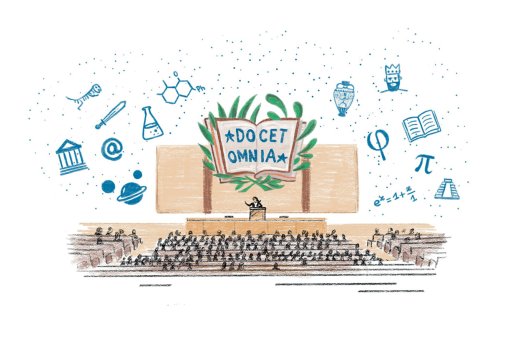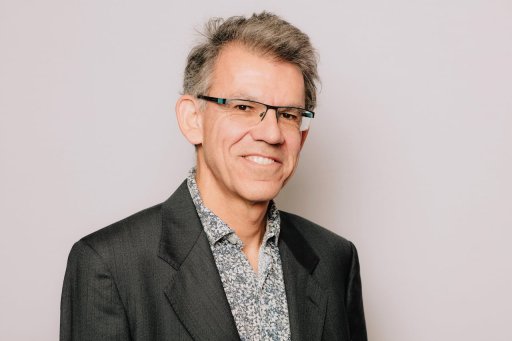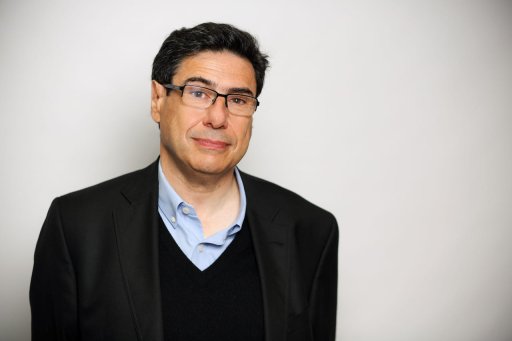Françoise Combes is an astrophysicist whose work focuses on galactic physics. She studies the formation, behavior and evolution of galaxies in space, using observations and numerical simulations, but is also interested in the mysterious dark matter, which makes up nearly 80 % of all matter in the Universe. In 2004, she became the first astrophysicist to join the Académie des Sciences and, since 2014, has held the Galaxies and Cosmology chair at the Collège de France. In 2020, she was awarded the CNRS Gold Medal.

Since its theorization in the 1930s, dark matter seems to have eluded all attempts by astrophysicists to uncover it. Is there any hope of identifying it in the near future ?
Françoise Combes: At present, we still seem a long way from discovery, as most of the candidates for what we call "dark matter" have disappeared. In 1985, we had a candidate based on the supersymmetric theory of elementary particles. This supposed supersymmetry stipulated that all elementary particles had their corresponding particle in another universe: bosons (photons, gluons, etc.) become fermions (electrons, protons, neutrons in the Standard Model), and vice versa. The candidate particle, the neutralino - which exists only hypothetically - was supposed to be the most stable of all. Alas, it escaped all detection experiments, whether in the tunnels of Mont Blanc or Gran Sasso. Then we thought we could find this dark matter in particle gas pedals. It should have about a hundred times the mass of a proton. Now, at the Large Hadron Collider (LHC), the collision of protons generates so much energy that it should reveal the particle we're looking for. In 2012, we detected the Higgs boson, which has roughly the same mass as the hypothetical dark matter particle, but is highly unstable. Experiments at the LHC have now exceeded the energy levels required for this discovery by a factor of 10, but without the slightest signature of our particle of interest, which should nevertheless be very stable, given that it has existed for thirteen billion years. Other candidates have been put forward since then, such as sterile neutrinos, supposed to have even lower mass, or axions, with extremely low mass, but none has won the unanimous support that neutralinos have. We're in a bit of a crisis situation, as we don't have any very serious candidates for this dark matter at the moment.
You also study the formation and behavior of galaxies. What tools do you have to work with these cosmic bodies ?
On the one hand, we use telescopes to observe galaxies at all wavelengths: optical, radio, infrared, etc. On the other hand, we use telescopes to observe the dynamics of galaxies. We observe the dynamics of galaxies and their rotation, and can map dark matter thanks to the deflection it imparts to the light rays of background galaxies. Numerical simulations also help us a great deal. We formulate a hypothesis concerning a modified law of gravity or a certain nature of dark matter, and simulate it numerically to see what it predicts: if the predictions of this model are not in agreement with observations, we modify the hypothesis until we manage to reconcile models and observations. New tools will soon be added to this arsenal, including a number of space telescopes.

On December 25 2021, the James-Webb space telescope will take off from Hubble. What will it tell us about the behavior of galaxies and dark matter ?
The launch was a wonderful Christmas present, indeed, and we're expecting vast quantities of valuable data. James-Webb is much larger than Hubble, with ten times the surface area and sensitivity. It also benefits from a much wider wavelength range than its predecessor; it can observe in the mid- and far-infrared, down to twenty-eight microns in wavelength, whereas Hubble stopped in the near-infrared at one or two microns. This new telescope will enable us to see farther into the future; primordial galaxies, for example; those formed at the very beginning of the Universe, between one hundred and five hundred million years after the Big Bang. The Universe went through a long dark age before this, during which expansion cooled and recondensed it, essentially into hydrogen atoms that absorb ultraviolet radiation; so there was no light. However, we believe that the first stars, and therefore the first galaxies, formed at this time gradually reionized the Universe, bringing it to the transparent state in which we know it today. We want to take a look back at this "cosmic dawn" that lifted the Universe out of a long night. But we don't know what these galaxies look like, and James-Webb should give us some answers. I don't think any simulation can prepare us for the surprises he may reveal!

This telescope is supported by NASA, but not only. What role has the European Space Agency played in this project ?
The European Space Agency (ESA) owns 15 % of the telescope's time. Initially, the project was to cost just one billion dollars, but since then a factor of ten has crept in, and the bill is now ten billion, mainly because the telescope has been long and complicated to build. ESA contributed around a billion dollars, or about 10 % of the total cost. But we also made a major contribution to the assembly of the instruments it carries. For example, the MIRI instrument, which is a spectrograph and imager in the very far infrared wavelengths, was assembled by the French at Paris Observatory and Orsay. We also supplied the launcher, Ariane 5. The first tests began in early February, to check that everything is working properly, and we'll be doing science through the telescope from June 2022.
In the context of an international collaboration such as this, how is access to the data collected by the telescope organized?
All those who have contributed, by assembling the instruments for example, are guaranteed usage time as a reward for their work, of course. The whole community made proposals for observations, and the most interesting were selected. The process was of course highly competitive, with perhaps 10% of proposals selected, and these teams will be given open time. The latter works a bit like with Hubble: when an observation is selected, the person who proposed it has a year's property, during which he or she can try to make publications. After a year, these observations become public and anyone can access them on the Internet. This puts some pressure on those who have made proposals to publish very quickly.
How did the telescope's promise inspire you to create a new chair at the Collège de France ?
In addition to primordial galaxies, we'll be using James-Webb to take a closer look at exoplanets - planets outside our solar system. Over the past twenty-five years, we've detected more than five thousand exoplanets, but always by indirect means. With the new telescope, we hope to detect the composition of these exoplanets' atmospheres. When exoplanets pass in transit in front of their star, we can use transmission to observe how much of the star's photons are absorbed by their atmospheres, the composition of which is revealed by the lines obtained. In this way, for example, we can hope to detect a biosignature: proof of the presence of the compounds necessary for life on these planets. We know that there are stars with so-called "habitable" planets. For example, the nearby star TRAPPIST-1, "only" forty light-years from Earth, has seven rocky planets orbiting it, not unlike Earth. This star is smaller than the Sun; it's a cold red dwarf, so planets can be closer to it and still have liquid water on their surface. In short, the habitable zone is closer to the star. Of the seven planets, three, perhaps four, are suspected of being habitable. What's more, because they are so close to their star, they complete their revolution around it in just a few days. This generates a lot of transits, so the James-Webb telescope will be able to observe them many times and sum up the light spectra of several transits to obtain clearly readable lines. We hope to find lines of carbon dioxide, water, oxygen, methane, ammonia... all elements that could indicate the presence - or at least the possibility - of life on these planets. That's why we thought of creating this new chair, decided by the Assembly in November 2021, which will be called "Planetary Formation: from Earth to Exoplanets". We think we're going to learn a lot about the formation of planets in our own solar system by looking at what's happening elsewhere, and this chair is here to reflect that. In the near future, we'll be able to understand what's happening in other systems and, in turn, what's happening in our own: how the Earth was formed, for example.
How would you sum up the Galaxies and Cosmology chair you currently hold at ?
It's a fascinating experience. Every year, we have to lecture on different subjects. I started with a lecture on dark matter, then on dark energy, then on active galactic nuclei. This is all part of the field I work in every day, so it was relatively easy. But, to produce all these lectures and seminars, you have to look at everything that was being done in the field at the time - science in the making - which is very exciting! It allows us to take a step back from the state of the art on a given subject, when we're used to only having our noses in our own work. After the first few years, I explored the boundaries of my subjects. This year, for example, I'm talking about all the variable objects in the Universe: neutron stars, gamma-ray bursts and so on. These are things I knew existed, but hadn't worked on before, giving me the opportunity to learn a lot of new things. Changing subject every year is a very enriching experience, which requires a lot of hard work, but broadens our own horizons as scientists.

In 2004, you became the first woman astronomer to join the Académie des Sciences, and in 2014, the first woman to be awarded a chair of astrophysics at the Collège de France. Since then, have you seen any change in the presence of women in this discipline ?
Yes, but it's a double-edged sword. I think we have to be positive and optimistic about the fact that women are acquiring more senior positions of responsibility, such as at the Académie or the Collège. For example, in the last century, even Marie Curie - who won two Nobel Prizes - never entered the Académie des Sciences, so progress has been made. Recently, new admissions have almost reached parity, with a total of 10 to 12% women - which is still better than zero. The same trend can be seen at the Collège de France and elsewhere, with university management positions becoming increasingly feminine. With young people, on the other hand, it's perhaps a little more difficult. Because, at the start, the number of young women going into scientific fields is similar to that of young men, at almost 40%. Then, little by little, during the thesis and afterwards, the difficulty arises of finding a stable position, after a series of fairly precarious post-doctorates, because the competition is even fiercer than before. In my day, you had to wait two or three years to get a permanent position. Now, you may have to wait seven or even eight years before you have a permanent position in which you can establish yourself and become stable. We find that young women often give up at this stage, because the thesis was already long. We need to do something to retain women at this level by offering less precarious positions after the thesis, which can lead to a more stable situation, provided all goes well. When I started out, around 30% of women were given permanent positions in astronomy, which wasn't too bad, and much better than in Anglo-Saxon countries such as Germany or England, where the figure was closer to 3 or 4%. Today, on the other hand, the percentage has fallen to 20-25%.

Could this imbalance in the presence of women in astrophysics be attributable to a "gendering" of the sciences ?
Absolutely. Astrophysics attracts a lot of people, but we see fewer women in mathematics or "hard" physics, for example. At university level, however, more than 50% of women pass their exams. However, these female students often censor themselves and opt for more feminine disciplines, such as biology or the medical and care professions. We have to fight against this "gendering" of science, and to do so, there are still many prejudices to overcome, mentalities to change - even at the level of education at school, through the most elementary things, like books that perpetuate stereotypes, and present parents with well-defined roles for father and mother. It's a culture that needs to change, to evolve through awareness-raising initiatives, which will certainly happen, but it will take time.
You were awarded the CNRS Gold Medal in 2020, and the L'Oréal-Unesco Prize for Women in Science the following year. How do these awards affect your work ?
The gold medal was a great recognition for the whole team, and we were all very proud to see that our work was making a remarkable contribution to science. For its part, L'Oréal does a great deal for women, including young women, with numerous grants awarded every year, in particular to support researchers in transitional situations, during their post-doctorate, and who are wondering about their future. These awards, and the doors they open through dedicated seminars and conferences, are an opportunity to encourage women in science. We were unable to hold these ceremonies in the last two years because of the pandemic, but we will be holding them in June, at the same time as this year's ceremony, which will enable several generations of prizewinners to meet. I think this will be very important in motivating and encouraging young women scientists.
Interview by William Rowe-Pirra, journalist










